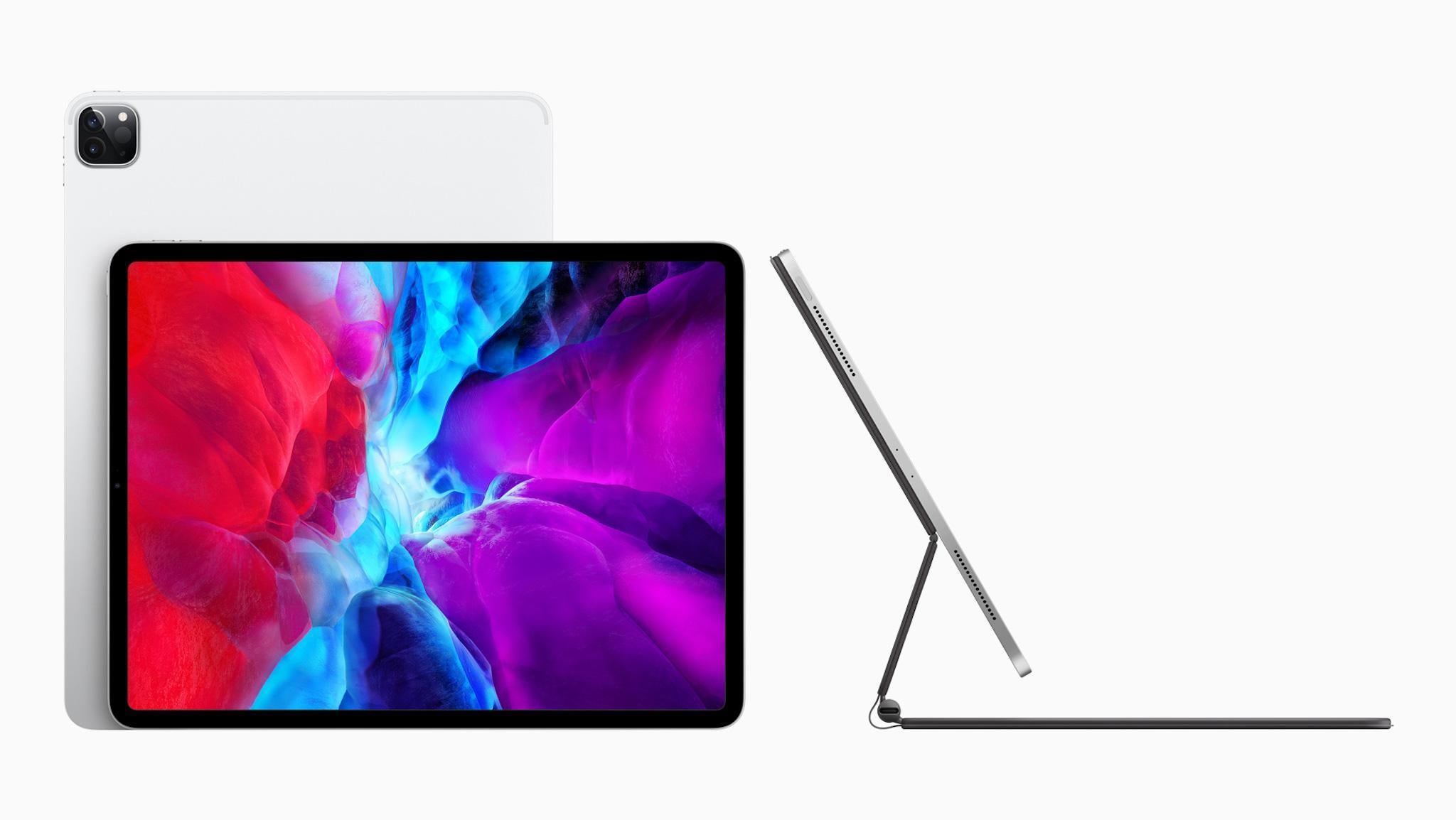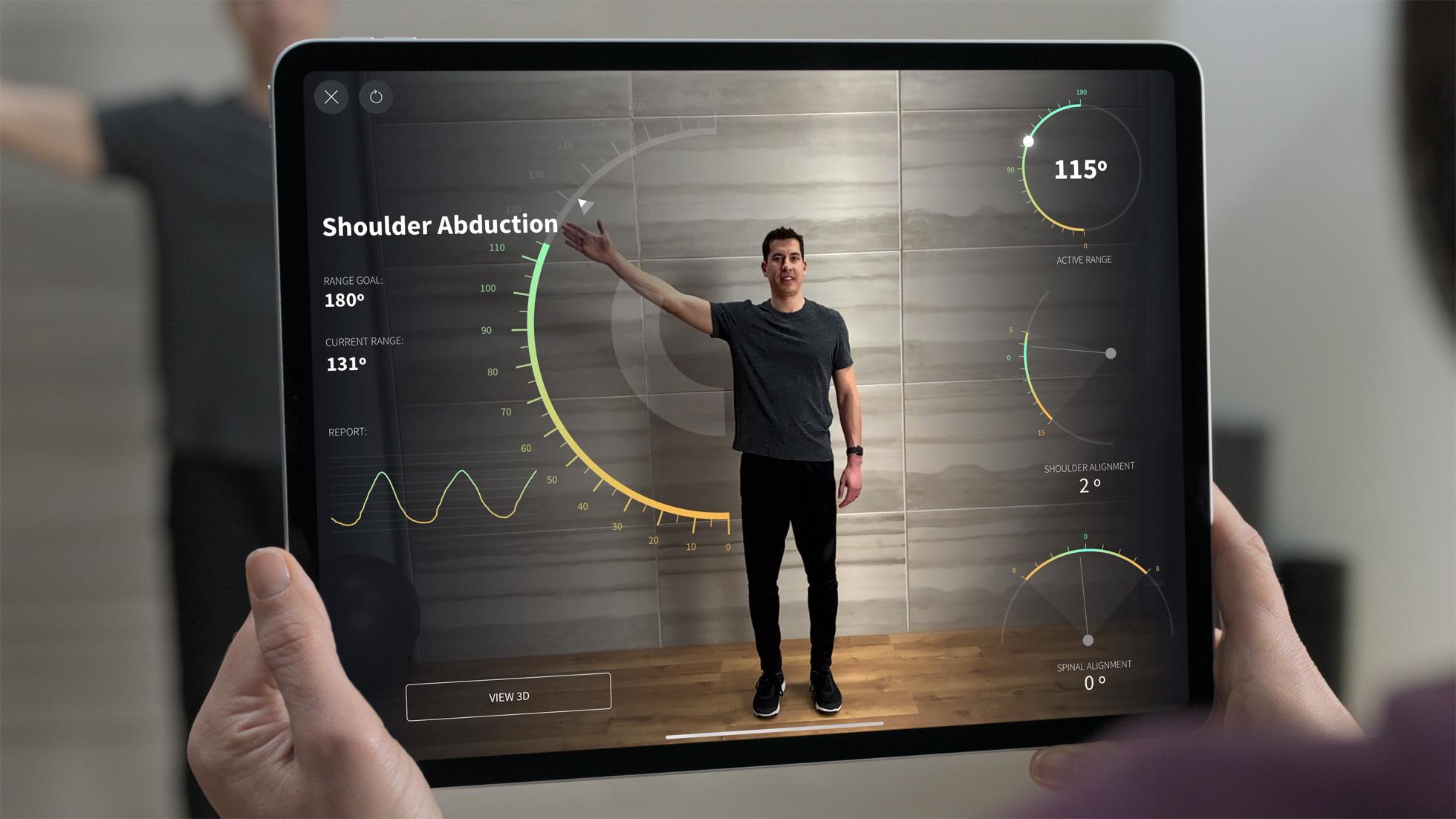iPad Pro 2020 review: Deeply upgraded new tablet is closer than ever to a full laptop experience
The outside is mostly unchanged – but a new keyboard, depth-sensing camera and performance improvements mean the inside is significantly upgraded

The latest iPad Pro, thanks to advanced components and an update to iPadOS, has become closer than ever to being a full-on PC, complete with keyboard accessory and trackpad support.
As before, the iPad Pro comes in two sizes, one with an 11in display, one with a bigger screen, measuring 12.9in. Both sizes currently have Smart Keyboard optional accessories, both are compatible with the second-generation Apple Pencil stylus and since they come with iPadOS 13.4 already installed, work with trackpads and mice as well.
But the PC-mimicking isn’t the only change here. There’s a new processor, dual cameras for the first time on an iPad, a LiDAR scanner to abet Augmented Reality (AR) features and studio-quality microphones, five of them.
Design
The iPad Pro looks identical to the previous model, which was first launched in November 2018. From the front, it’s completely identical, from the rear, there’s one big difference, that the camera unit has changed to add the second lens and LiDAR scanner. These are mounted in a square unit, similar to the raised unit on the back of the iPhone 11 and iPhone 11 Pro. The proportions are different here: where the iPhone has a raised square with two or three lenses sitting above it. Here, the raised square sits higher, but the individual two lenses are only barely higher than that. The LiDAR scanner is completely flush to the square.

There’s no other visible change, apart from the fact that there are now five microphones, but these are really not noticeable.
As before, the iPad Pro comes in two sizes, 11in and 12.9in, with a Face ID sensor buried in the frame around the screen. The display is as sharp and beautiful as ever, with delicately rounded corners that follow the curved edge of the tablet itself. It continues to be a display with ProMotion tech, that is, it can dynamically adjust the refresh rate as needed, to make scrolling smoother and responsive.
Performance
The new iPad Pro has a new chip at its heart, the A12Z, which sounds like it’s the last word in A12 processors. In fact, strictly speaking, it’s called A12Z Bionic. The iPhone 11 has a chip called A13, so this is less powerful, right? Actually, no, Apple says this is the most powerful chip it has ever made and has been specifically designed for the iPad Pro, to improve graphics performance, and the highest performance generally on an iPad.
Of course, it’s hard to be sure about these things but everything from launching apps to running them seems nippy and delay-free.
Using the iPad Pro like a laptop
Typing this review on the iPad Pro has been straightforward and easy, though already I find I’m yearning for the backlighting that will come with the Magic Keyboard when it’s released in May. But the tactile feel of the keys, unchanged from previous versions, is excellent and appealing.
Once you’ve opened a document, the experience is very similar to that on a Mac laptop. Of course, it was always possible to move the cursor by tapping the display in the right place. But now, just by pairing a trackpad with the iPad Pro in Bluetooth settings, you can add another dimension. Tap the trackpad and the iPad Pro wakes up. A circular cursor appears on the display. You’re not limited to tapping on just the live text area of the document, you can tap anywhere, and the circle will appear. Leave it hanging and it’ll disappear after about three seconds.
Tap into the text, though, and the circle turns into a vertical blue cursor at the beginning or end of the word you’ve selected. Tap more firmly and it’ll move to the exact letter you’re touching, whereas if you tap the display directly, it’ll stay at one end of the word. In this way, the trackpad offers a greater level of interaction than your finger can. Other gestures are recognised, such as double-tapping on the trackpad which highlights the entire word. You can also pick the cursor up by resting your thumb on the trackpad and dragging it to a new position with your finger. I’d have thought this would highlight text but, no, that’s done by double-clicking to highlight a word and then clicking on the grabber bar at the end of the word and dragging it.
So, is it every bit as good as typing on a Mac? Well, the thing that’s missing is what the Magic Keyboard will sort: a trackpad and a place to rest your wrists. That’s the thing I really notice when switching back to a laptop, that my wrists sit on the expanse of metal either side of the trackpad – though not everyone thinks this is an ergonomically good way to type.
The versatility of the cursor is one of the highlights of this new trackpad capability. The circle is attractive and highly visible. As well as transforming into a regular cursor, it also changes shape to match an app icon, for instance. Sometimes, I found difference in colour as the cursor sat behind an item, say as you moved from the month to year indicator I the calendar, could be a little hard to see, but on the whole this is a highly efficient cursor that’s great to use.
Similarly, there are gestures that can be employed on the trackpad such as a three-finger sweep upwards to return to the Home screen or right-clicking by using two fingers on the trackpad.
To make the dock appear, you move the cursor the bottom of the screen and keep going. This feels curious at first: your finger looks like it’s reached the bottom of the display but as you keep moving down the trackpad the cursor vanishes and the dock appears in direct response to your movement.
One of the coolest things about this new way to interact with the iPad is that it’s not limited to the latest iPad Pro. Any iPad running the latest iPad software, iPadOS 13.4, will be trackpad-compatible.
LiDAR
Apple has made much of the fact that LiDAR is something used by NASA in its next Mars exploration. It’s more familiar to most of us as an element in the driverless car. Either way, it’s something that works by projecting light onto objects which reflects back and, based on the time it takes, gives a near-instantaneous and detailed depth map of the environs. Apple says it works inside and out, and can reach up to 5 metres away.
The biggest use of LiDAR will be for Augmented Reality (AR) applications. The first of these is included in the iPad Pro: an enhanced version of the Measure app. If you haven’t used it, Measure is useful when you don’t have a tape measure handy. It can calculate the length of a table, say, by pointing the phone at it and picking the start and end points you want to analyse. Now, thanks to LiDAR, it will automatically know where the edge of the table or chair or person is, and can calculate all the more quickly. Even better, as you approach the measured item, the virtual line adjusts to display visible guides along it.
Other apps previewed by Apple include some very cool ones, including one, Shapr3D, which will quickly scan a room and create a two-dimensional and then three-dimensional floor plan. Ikea is working on a more advanced way to check out what some of the company’s products will look like in your room. There are medical applications such as Complete Anatomy which leverages the power of the scanner to measure a patient’s movements in three dimensions, with motion capture to identify which movement they’re doing.

Plus, of course, games. Hot Lava, the lively platforming game, will soon be available to view as though it’s in your living room, with creatures and heroes jumping over domestic elements like chairs and cushions with great precision.
Verdict
Although the new iPad Pro outwardly looks the same as the last model, apart from the enhanced camera unit on the back, this is a significantly upgraded model. The biggest increase is in performance and as apps are developed to make the most of the new components, this extra power will be needed.
The biggest changes are the new LiDAR scanner, whose power will also become evident in coming months, and the improved cameras which are designed to turn the iPad Pro into a portable movie studio, say, rather than a better way to take photographs. Though that is one useful side-benefit.
The trackpad compatibility, though not exclusive to this tablet, is a great improvement and will divert some computer purchases in the iPad’s direction.
iPad Pro available now, from £769 for 11in, from £969 for 12.9in. Smart Keyboard Folio, from £179, available now, Magic Keyboard, from £299, coming in May.
Join our commenting forum
Join thought-provoking conversations, follow other Independent readers and see their replies
1Comments